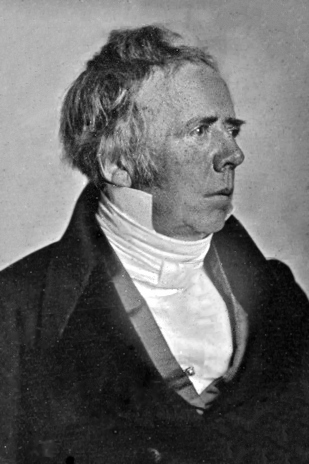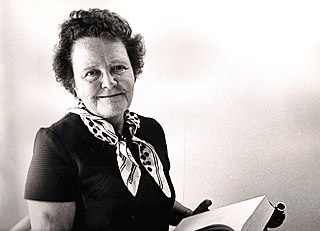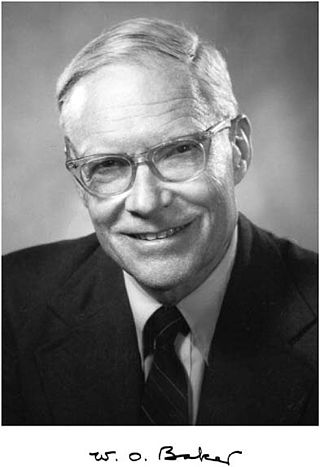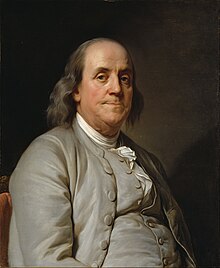
James Dewey Watson is an American molecular biologist, geneticist, and zoologist. In 1953, he co-authored with Francis Crick the academic paper proposing the double helix structure of the DNA molecule. Watson, Crick and Maurice Wilkins were awarded the 1962 Nobel Prize in Physiology or Medicine "for their discoveries concerning the molecular structure of nucleic acids and its significance for information transfer in living material".

Hans Albrecht Bethe was a German-American theoretical physicist who made major contributions to nuclear physics, astrophysics, quantum electrodynamics, and solid-state physics, and who won the 1967 Nobel Prize in Physics for his work on the theory of stellar nucleosynthesis. For most of his career, Bethe was a professor at Cornell University.

The American Philosophical Society (APS) is an American scholarly organization and learned society founded in 1743 in Philadelphia that promotes knowledge in the humanities and natural sciences through research, professional meetings, publications, library resources, and community outreach. It was founded by the polymath Benjamin Franklin and is considered the first learned society founded in what became the United States, as well as the most prestigious.

The Oersted Medal recognizes notable contributions to the teaching of physics. Established in 1936, it is awarded by the American Association of Physics Teachers. The award is named for Hans Christian Ørsted. It is the Association's most prestigious award.
The Catherine Wolfe Bruce Gold Medal is awarded every year by the Astronomical Society of the Pacific for outstanding lifetime contributions to astronomy. It is named after Catherine Wolfe Bruce, an American patroness of astronomy, and was first awarded in 1898.

Herman Heine Goldstine was a mathematician and computer scientist, who worked as the director of the IAS machine at the Institute for Advanced Study and helped to develop ENIAC, the first of the modern electronic digital computers. He subsequently worked for many years at IBM as an IBM Fellow, the company's most prestigious technical position.

Edwin Ernest Salpeter was an Austrian–Australian–American astrophysicist.

Frederick Chapman Robbins was an American pediatrician and virologist. He was born in Auburn, Alabama, and grew up in Columbia, Missouri, attending David H. Hickman High School.
The Manchester Literary and Philosophical Society, popularly known as the Lit. & Phil., is one of the oldest learned societies in the United Kingdom and second oldest provincial learned society.

Ruth Myrtle Patrick was an American botanist and limnologist specializing in diatoms and freshwater ecology. She authored more than 200 scientific papers, developed ways to measure the health of freshwater ecosystems and established numerous research facilities.
Alexander Gordon Bearn informally Alick Bearn, a physician, scientist and author, was professor at Rockefeller University and Cornell University Medical College. He was a member of the National Academy of Sciences, and had been Executive Officer of the American Philosophical Society. He died Friday, May 15, 2009, in Philadelphia. Prior to his death Bearn was working on a family history that followed the Bearn family from Béarn, France to Angus, Scotland and finally to the United States.
Irwin Ira Shapiro is an American astrophysicist and Timken University Professor at Harvard University. He has been a professor at Harvard since 1982. He was the director of the Center for Astrophysics | Harvard & Smithsonian from 1982 to 2004.
Fred Warren McLafferty was an American chemist known for his work in mass spectrometry. He is best known for the McLafferty rearrangement reaction that was observed with mass spectrometry. With Roland Gohlke, he pioneered the technique of gas chromatography–mass spectrometry. He is also known for electron-capture dissociation, a method of fragmenting gas-phase ions.

William Oliver Baker was president of Bell Labs from 1973 to 1979 and advisor on scientific matters to five United States presidents.
David Albert Hodges (1937–2022) was an American electrical engineer, digital telephony pioneer, and professor of electrical engineering at the University of California, Berkeley.
The John Fritz Medal has been awarded annually since 1902 by the American Association of Engineering Societies (AAES) for "outstanding scientific or industrial achievements". The medal was created for the 80th birthday of John Fritz, who lived between 1822 and 1913. When AAES was dissolved in 2020, the administration of the Fritz medal was transferred to the American Institute of Mining, Metallurgical, and Petroleum Engineers (AIME), and is currently coordinated by AIME member society, the Society of Mining, Metallurgy, & Exploration (SME).

This is a comprehensive list of primary and secondary works by or about Benjamin Franklin, one of the principal Founding Fathers of the United States. Works about Franklin have been consistently published during and after Franklin's life, spanning four centuries, and continue to appear in present-day publications. Scholarly works that are not necessarily subject-specific to Franklin, yet cover his life and efforts in significant measure, may also be included here. In contrast, this bibliography does not include the numerous encyclopedia articles and short essays about Franklin.











